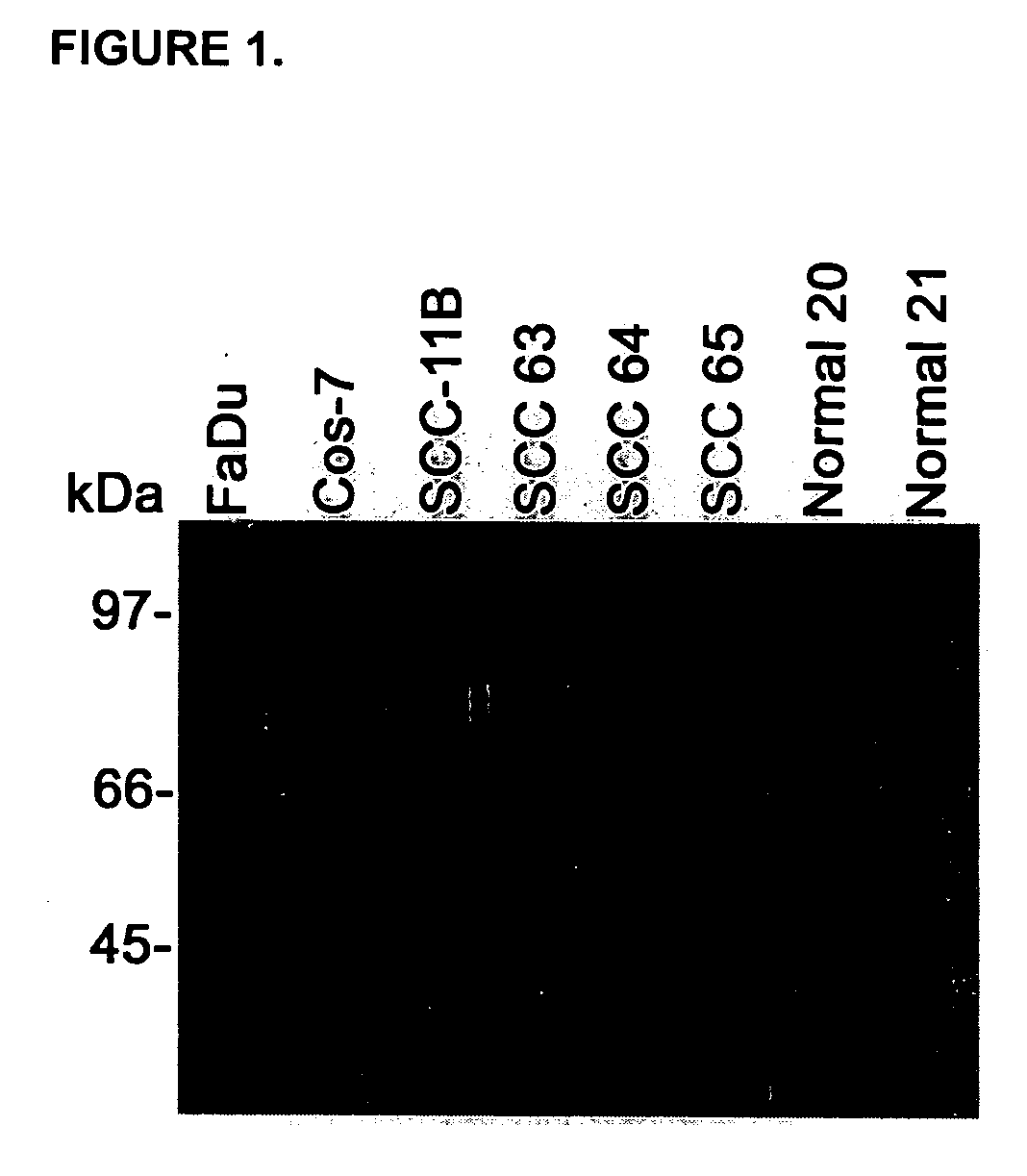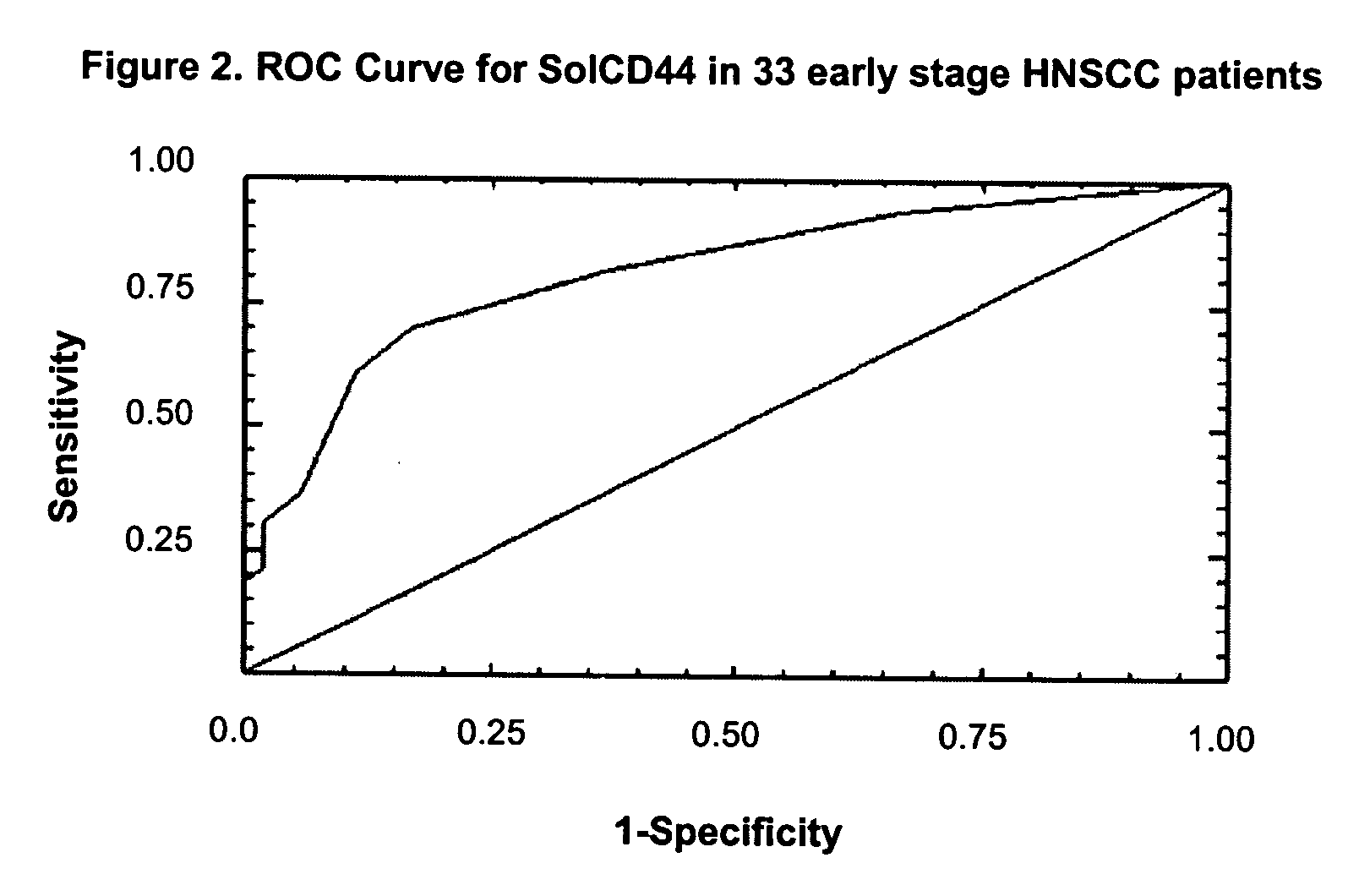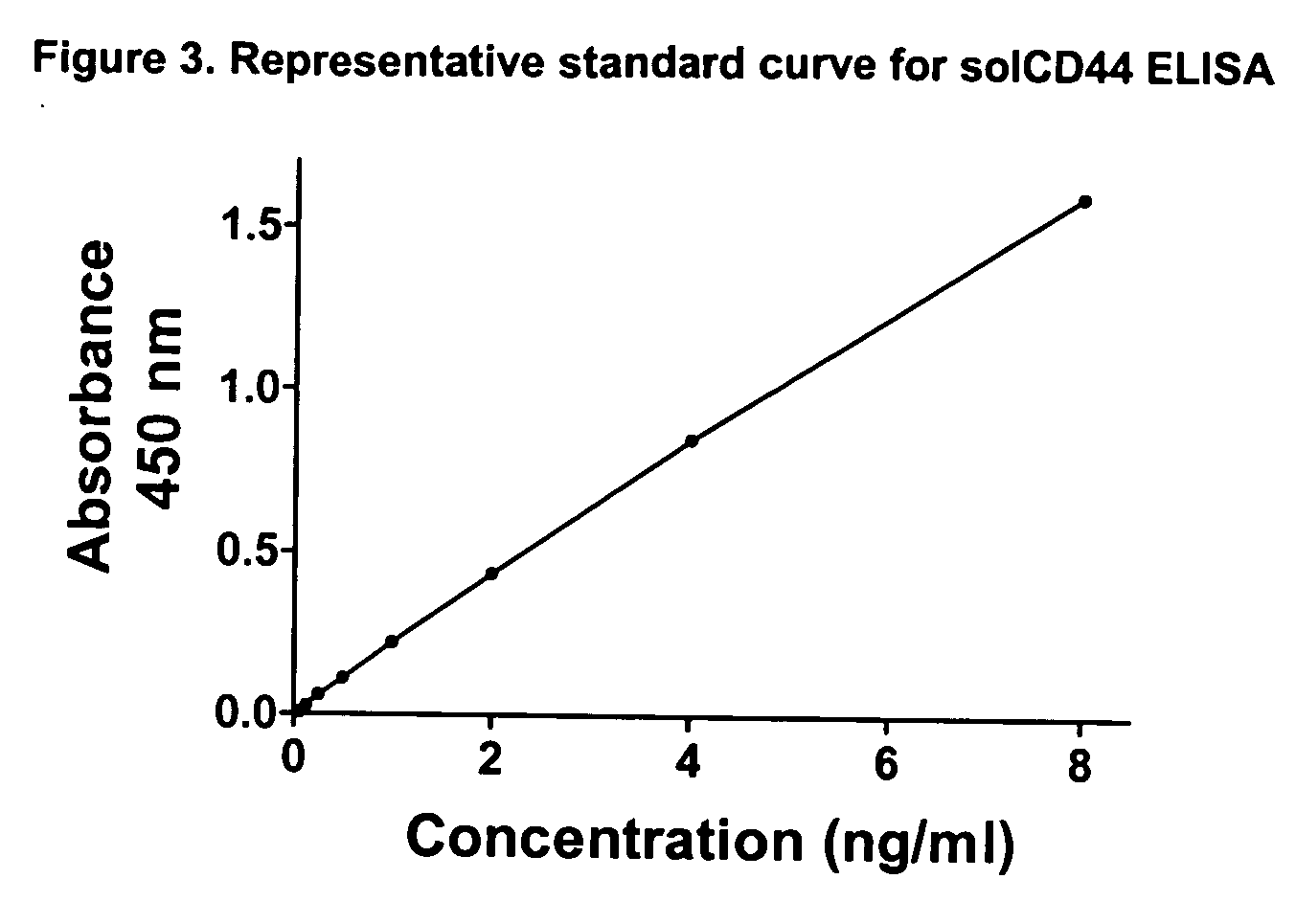Salivary soluble CD44: a molecular marker for head and neck cancer
a squamous cell carcinoma and soluble cd44 technology, applied in the field of salivary soluble cd44, can solve the problems of affecting the clinical outcome, and often facing serious morbidities and complications, and achieving the effects of reducing the risk reducing the clinical effect of squamous cell carcinoma, and improving the clinical outcom
- Summary
- Abstract
- Description
- Claims
- Application Information
AI Technical Summary
Benefits of technology
Problems solved by technology
Method used
Image
Examples
example 1
[0036] We performed a solCD44 ELISA on saliva from 26 HNSCC patients, 10 normal volunteers, conditioned media (CM) of 4 HNSCC cell lines and 1 CD44 negative cell line (COS-7). Western blot was performed on CM from 2 HNSCC cell lines (UMSS11B and FaDu), COS-7, 3 HNSCC and 2 normal saliva specimens to verify ELISA antibody specificity.
[0037] The solCD44 ELISA was performed on HNSCC cell lines to verify that solCD44 is expressed by the cancer cells.
[0038] We also performed western blot analysis on HNSCC cell lines and saliva from HNSCC patients and normal volunteers to confirm the specificity of the solCD44 ELISA antibody.
Materials and Methods
[0039] Twenty-six HNSCC patients and 10 normal controls were obtained according to the protocol approved by the Institutional Review Board. Control subjects were volunteers from healthcare and research fields. To decrease the potential for false negatives in our control group, all were nonsmokers for at least 10 years....
example 2
[0054] The Bender MedSystems ELISA plate is designed for use with plasma, serum and urine samples. Any matrix (e.g. serum, urine, saliva) may contain factors that affect ELISA test results, commonly known as a matrix effect. Such effects can be corrected for by running the standards in the same matrix as the samples. To better adapt the test to saliva specimens, we prepared our standards in a synthetic saliva matrix (Salimetrics, State College, Pa.) diluted 1:5 in normal saline (since patients swish and gargle with 5 cc saline) and switched to a sample diluent (Salimetrics) developed for saliva samples.
[0055] We performed the solCD44 ELISA on 73 HNSCC patients and 54 controls with other head and neck diseases. This includes the 25 invasive HNSCC saliva samples from Example 1, which were retested using the revised method. Sixty-nine of the HNSCC patients had mucosal disease of the oral cavity, oropharynx, larynx or hypoparynx. Results are summarized in Table 6. The mean solCD44 leve...
PUM
| Property | Measurement | Unit |
|---|---|---|
| temperatures | aaaaa | aaaaa |
| cure rates | aaaaa | aaaaa |
| size | aaaaa | aaaaa |
Abstract
Description
Claims
Application Information
 Login to View More
Login to View More - R&D
- Intellectual Property
- Life Sciences
- Materials
- Tech Scout
- Unparalleled Data Quality
- Higher Quality Content
- 60% Fewer Hallucinations
Browse by: Latest US Patents, China's latest patents, Technical Efficacy Thesaurus, Application Domain, Technology Topic, Popular Technical Reports.
© 2025 PatSnap. All rights reserved.Legal|Privacy policy|Modern Slavery Act Transparency Statement|Sitemap|About US| Contact US: help@patsnap.com



